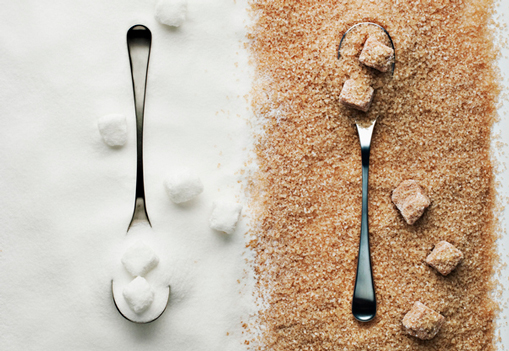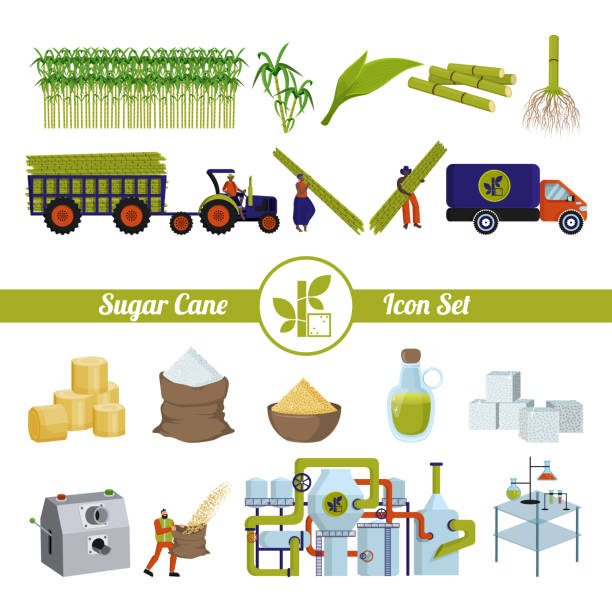Expert-Approved sugar cane products for Chefs
Wiki Article
Revealing the Manufacturing Tricks Behind Sugar Cane and Its Diverse Variety Of Products
The manufacturing trip of sugar cane is complex and multi-faceted. It begins in the fields, where careful harvesting techniques set the stage for ideal sugar extraction. The process entails a number of stages, including juice extraction and refining - sugar cane products. Nonetheless, sugar cane's potential extends much beyond mere sweetness. Advancements in processing and sustainable methods are reshaping its function in modern industries. What exists in advance for this versatile crop? The solutions might stun those interested in its futureThe Journey of Sugar Cane: From Area to Manufacturing facility

As sugar cane guides delicately in the exotic wind, it starts a transformative trip from field to factory. The lively environment-friendly stalks, abundant in sucrose, are cultivated under suitable problems, gaining from ample sunlight and rainfall. Farmers very carefully check the growth, ensuring the plants reach their peak maturity, which is crucial for optimizing sugar content.Once developed, the cane is planned for harvesting, where its coarse framework holds the guarantee of wonderful items. The trip proceeds as the stalks are transported to processing centers, where they undertake a series of careful steps. At the manufacturing facility, the cane is washed, shredded, and pressed to extract the juice. This juice is after that made clear and evaporated, leading the way for formation. Each stage of this journey is essential, as it ultimately figures out the quality of the sugar and other products originated from this versatile plant.
Harvesting Techniques: The Primary Step in Production
Collecting sugar cane requires accuracy and skill, as the timing and method straight impact the top quality of the last product. The process normally begins with establishing the excellent harvest, which is important; sugar content peaks simply prior to the plant gets to full maturation. Farmers frequently count on experience and farming indications to choose when to harvest.Two major methods control the harvesting landscape: guidebook and mechanical techniques. Manual harvesting, though labor-intensive, permits mindful option of stalks and decreases damages. Employees use machetes to cut the cane near to the base, making sure the stalks continue to be intact for processing.Mechanical harvesting, on the other hand, utilizes specific tools to reduce and accumulate the cane swiftly. While this technique substantially raises efficiency, it may result in greater levels of particles and lower sugar content. Ultimately, the selected strategy influences not just the amount however likewise the quality of sugar cane delivered to processing facilities.The Extraction Process: Unlocking the Sweet taste
The removal process is essential for transforming harvested sugar cane into sweet juice. Different techniques of juice extraction can significantly influence the top quality and yield of the last item. Understanding these strategies is crucial for maximizing the benefits of sugar cane manufacturing.Collecting Techniques Clarified
Launching the sweet taste of sugar cane begins with exact harvesting techniques that ensure maximum return and high quality. The procedure normally entails reducing the cane at ground level, guaranteeing marginal damage to the plant and enabling for regrowth. Harvesters commonly make use of machetes or specialized equipments, relying on the range of the procedure. Timing is important; collecting occurs when the sugar web content reaches its peak, typically during dry periods. In addition, workers need to be educated to identify the most effective stalks, avoiding those that are also old or unhealthy. Efficient transportation to refining centers is additionally important, as hold-ups can bring about sugar destruction (sugar cane products). These meticulous strategies eventually lay the foundation for creating top quality sugar and its varied by-productsJuice Extraction Approaches
Juice removal is an important action in transforming sugar cane right into its sweet significance. This process generally entails a number of techniques, each created to effectively extract the sweet fluid from the fibrous stalks. The most typical strategy is milling, where the sugar cane is smashed between hefty rollers to release the juice. One more method is diffusion, which uses hot water to liquify the sugar from the cane fibers, making it an extra reliable choice for large-scale procedures. In addition, some producers use screw presses, which use mechanical stress to remove juice. After removal, the juice undertakes clarification to get rid of pollutants before more handling. Each technique reflects the market's emphasis on optimizing return and making certain top quality sugar production.Refining Sugar: Changing Raw Cane Into Granulated Gold
The refining procedure is essential for converting raw cane sugar right into the pure, granulated product customers recognize. sugar cane products. This entails a collection of removal and purification steps to get rid of contaminations, complied with by condensation and drying out strategies that enhance the sugar's quality. Comprehending these methods reveals the complex change from cane to the gold granules that sweeten numerous foods and drinksExtraction and Purification Refine
An important stage in the sugar manufacturing trip includes the removal and purification of juice from newly gathered sugar cane. This procedure begins with crushing the cane to release its wonderful juice, usually making use of big rollers or mills. The removed juice consists of not just sugar yet also impurities, including fibers and mud. To assure the juice appropriates for further refining, it goes through a filtration procedure. This includes passing the juice through various filters and clarifiers to eliminate strong particles and undesirable products. Chemicals such as lime might be included to help in the clarification process. The outcome is a clear, raw cane juice that functions as the foundation for creating polished sugar, all set for succeeding stages of processing.
Crystallization and Drying Strategies
After the removal and filtration procedures generate clear raw cane juice, the following step in sugar production is formation. This process includes boiling the juice to evaporate water, allowing sugar particles to create crystals. As the liquid thickens, it gets to supersaturation, triggering sugar to take shape. The mix is after that cooled down, advertising more crystal development. When crystallization is complete, the sugar crystals are separated from the staying syrup via centrifugation.The last includes drying out, where the crystals are exposed to warm air to get rid of recurring moisture. This action is vital, as it guarantees the product accomplishes the desired granulation and rack stability. The result is pure, granulated sugar, ready for product packaging and distribution.Beyond Sweetness: Diverse Products From Sugar Cane
While sugar cane is mainly identified for its pleasant flavor, its adaptability expands far beyond plain sweet taste. This durable plant functions as the resource for a myriad of items that accommodate varied industries. Ethanol, derived from sugar cane fermentation, plays an important duty in renewable resource, functioning as a cleaner choice to fossil gas. Furthermore, molasses, a by-product of sugar refining, is utilized in pet feed, as well as in cooking and fermentation processes.Sugar cane's fibrous deposit, referred to as bagasse, is not lost; it is transformed right into eco-friendly packaging materials and works as a biomass fuel resource. Numerous sugars and syrups acquired from sugar cane discover applications in the food and drink field, adding to flavor and preservation. The plant's leaves can be used for thatching, while its juice is taken in as a renewing drink in numerous societies. Consequently, sugar cane exhibits farming capacity beyond its sweet credibility.Developments in Sugar Cane Processing
As developments in innovation continue to improve numerous markets, sugar cane processing is experiencing a substantial transformation. Modern advancements, consisting of automated visit the site harvesting and precision farming, are enhancing efficiency and return. Drones and sensing units check plant health, enabling farmers to maximize watering and nutrient application, ultimately boosting productivity.In processing facilities, advanced equipment and equipment streamline procedures. Advancements such as enzymatic processing and progressed purification strategies improve the extraction of sugar while minimizing waste. Additionally, the fostering of real-time data analytics allows producers to monitor procedures carefully, guaranteeing quality assurance and reducing downtime.Biotechnology is also playing an essential role; genetic engineerings improve sugar cane's resistance to insects and ecological stressors. These innovations not only add to higher sugar returns but additionally assist in the manufacturing of varied byproducts from the cane, expanding its commercial applications. In general, these technologies are leading the way for a much more reliable and sustainable sugar cane processing sector.The Future of Sugar Cane: Sustainability and Bioproducts
The future of sugar cane manufacturing is increasingly linked with sustainability and the development of bioproducts. As international need for green choices climbs, the sugar Click This Link cane industry is pivoting in the direction of practices that lessen ecological influence. Innovations in cultivation methods, such as accuracy agriculture and integrated pest management, purpose to enhance yield while minimizing resource consumption.Furthermore, sugar cane is being explored as a basic material for biofuels, bioplastics, and other lasting items. These bioproducts not only supply an eco-friendly option to conventional nonrenewable fuel sources and plastics yet likewise add to a round economy by utilizing waste materials.Research and development in biotechnology are paving the means for improved sugar cane ranges that call for much less water and plant foods, better promoting sustainability. By welcoming these advancements, the sugar cane market can protect its future while dealing with vital ecological challenges, demonstrating its potential as a cornerstone of sustainable development.
Often Asked Questions
What Are the Ecological Influences of Sugar Cane Farming?
The environmental effects of sugar cane farming consist of deforestation, dirt degradation, and water contamination. Additionally, making use of chemicals can harm biodiversity, while monoculture methods lower ecosystem resilience, posing long-term sustainability difficulties for farming practices.
Exactly How Does Sugar Cane Compare to Other Sugar Nutritionally?
Sugar cane, rich in carbs, supplies power yet lacks necessary nutrients compared to choices like honey or maple syrup, which supply vitamins and minerals. Its high glycemic index likewise increases concerns over blood sugar level spikes.What Are the Health Conveniences of Consuming Sugar Cane Products?
The health and wellness benefits of consuming sugar cane items include boosted food digestion, enhanced energy levels, and potential antioxidant buildings. Furthermore, they may sustain hydration and give essential vitamins and minerals, contributing positively to total well-being.Exactly How Is Sugar Cane Waste Utilized After Processing?
After processing, sugar cane waste is used in numerous ways, including biofuel production, animal feed, and natural plant foods. This lasting strategy reduces environmental influence while making best use of resource efficiency within the sugar sector.What Are the Historical Origins of Sugar Cane Growing?

Report this wiki page